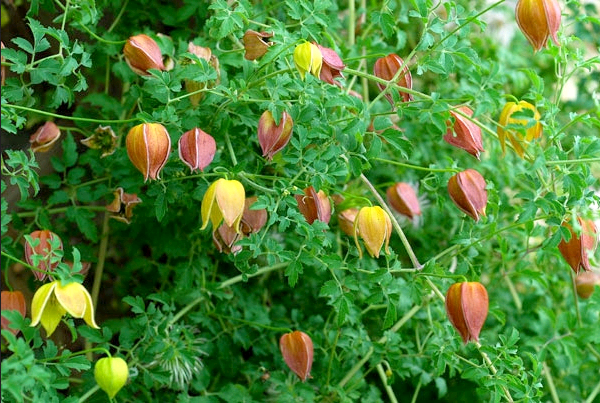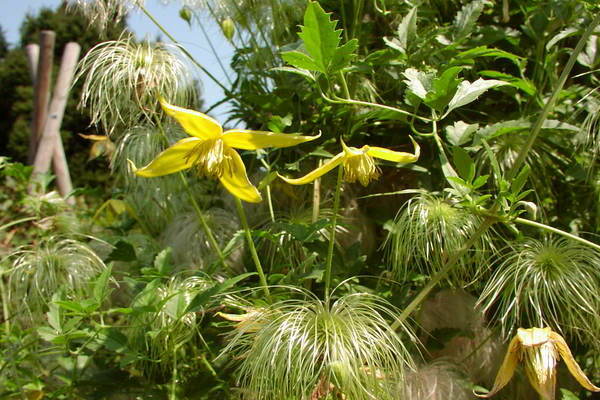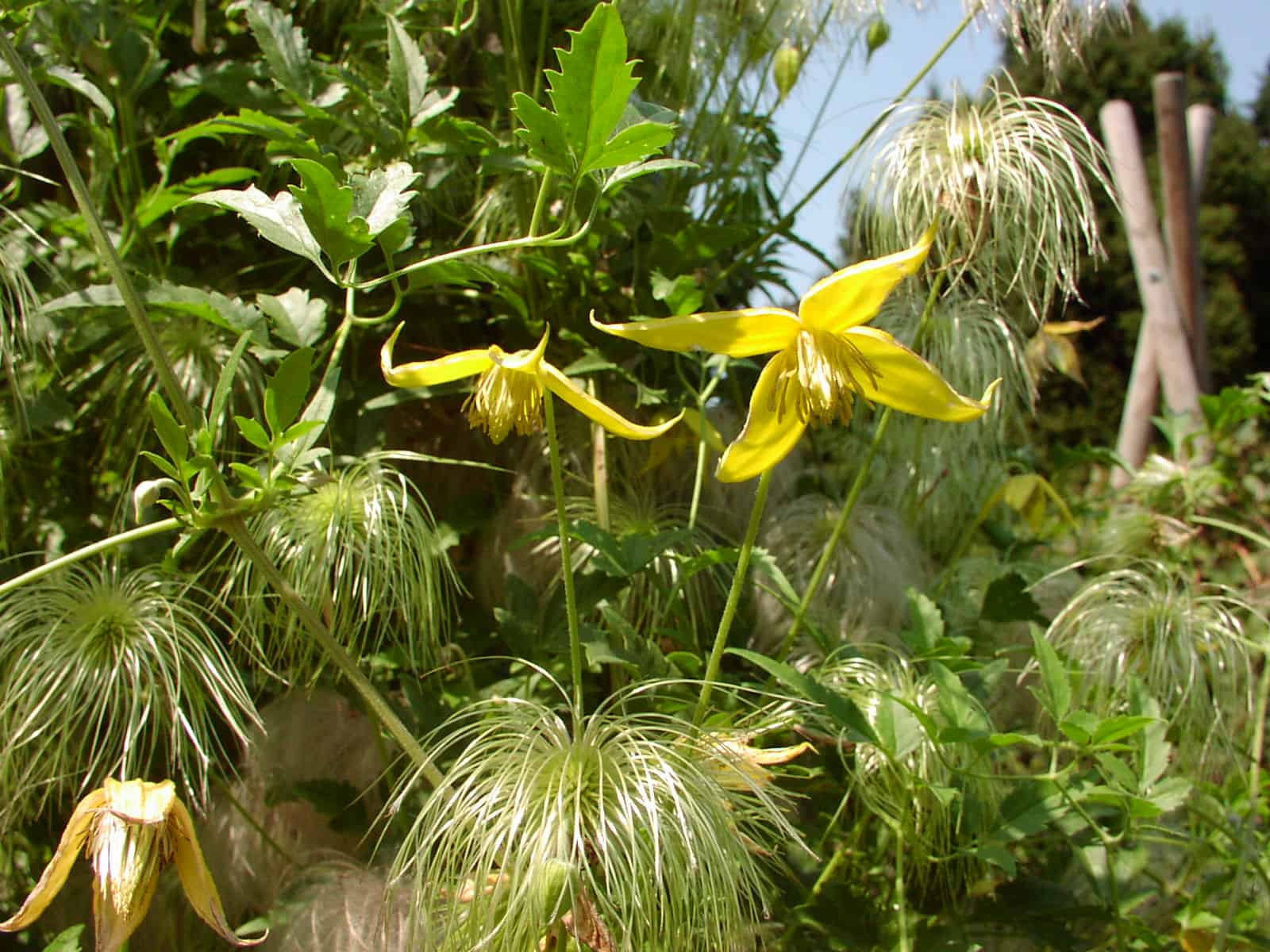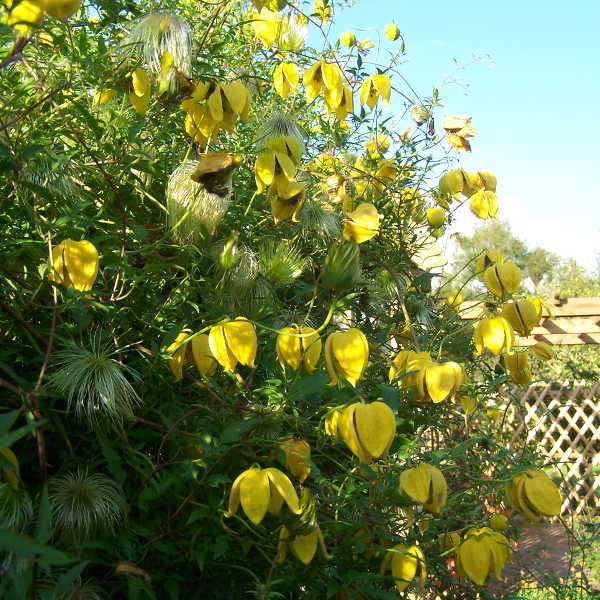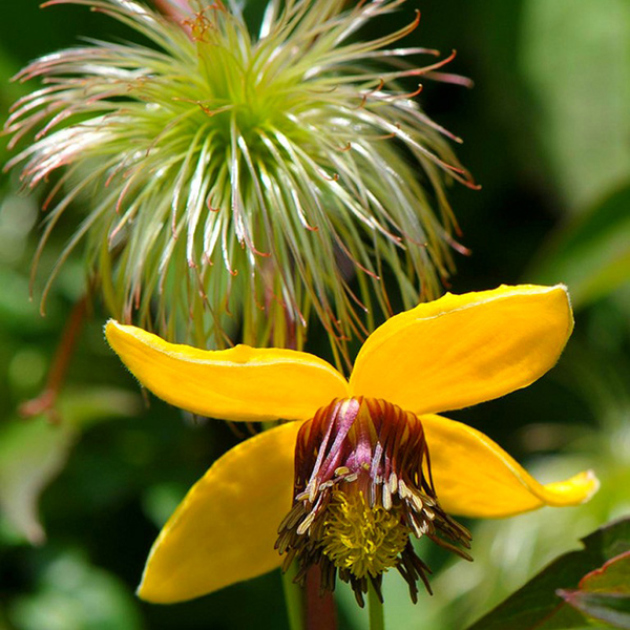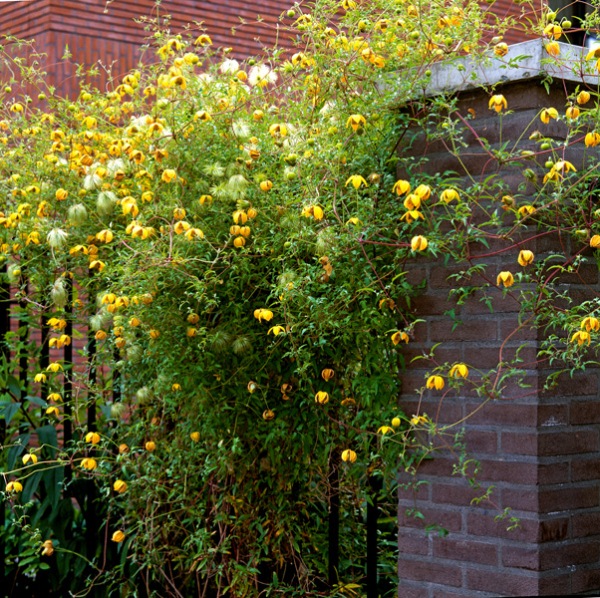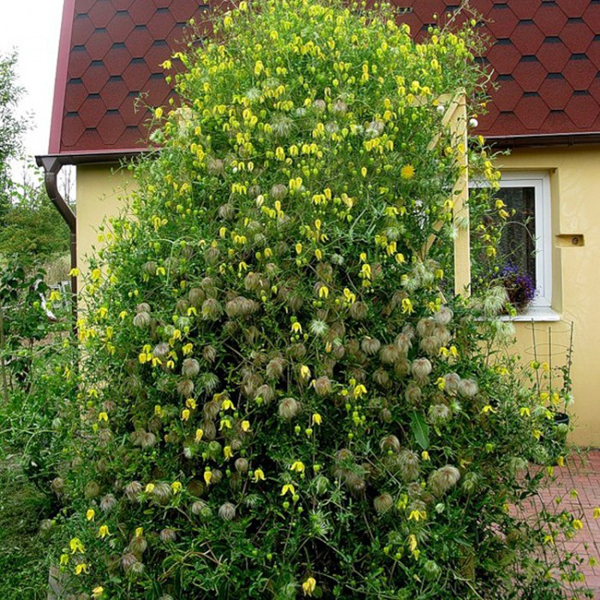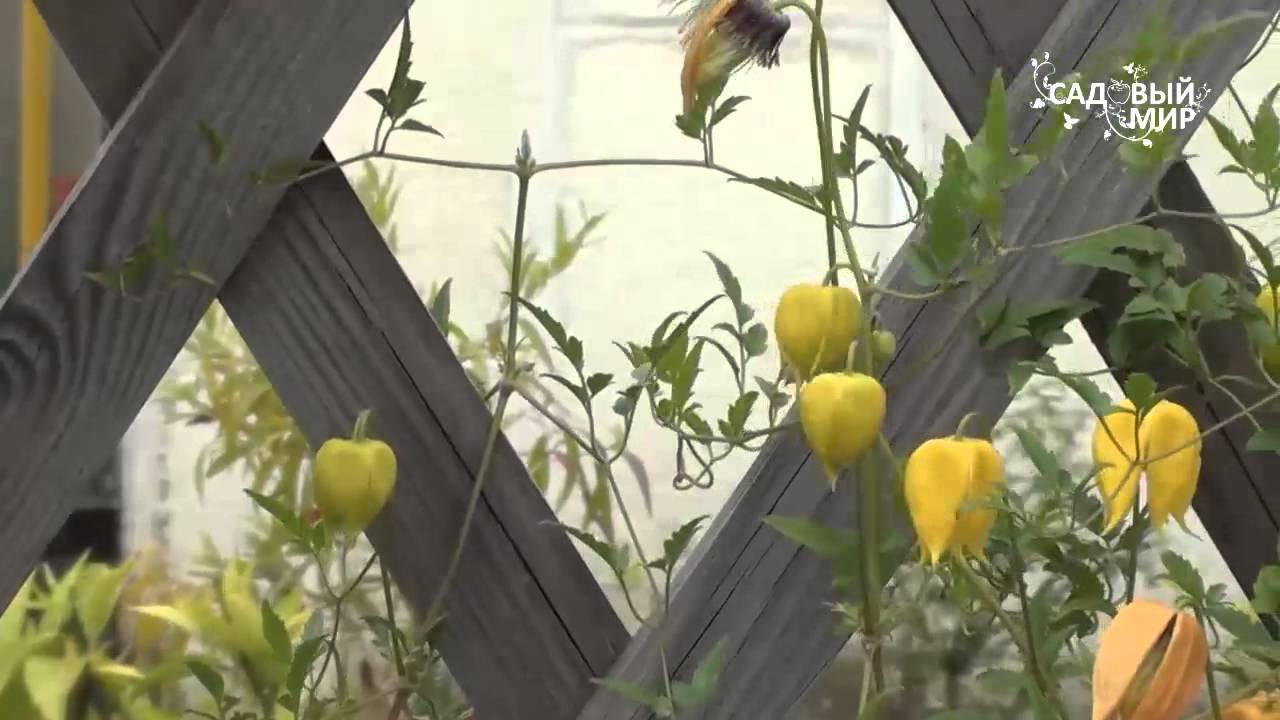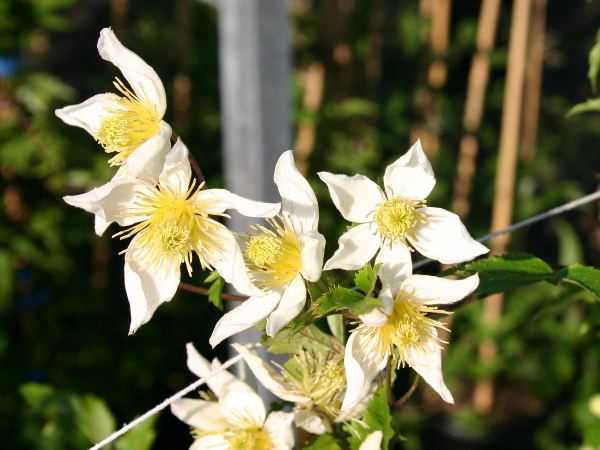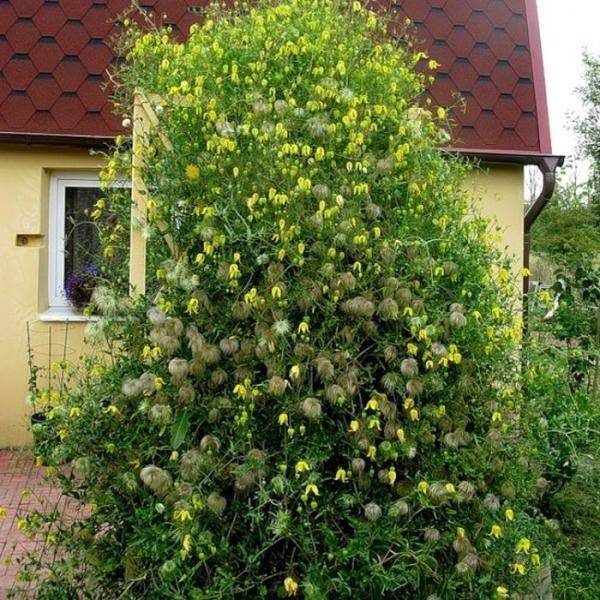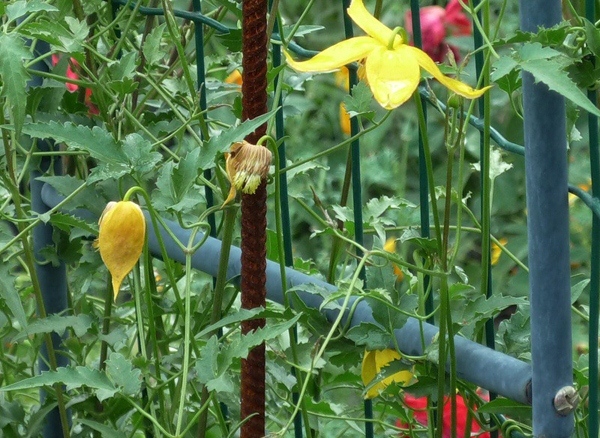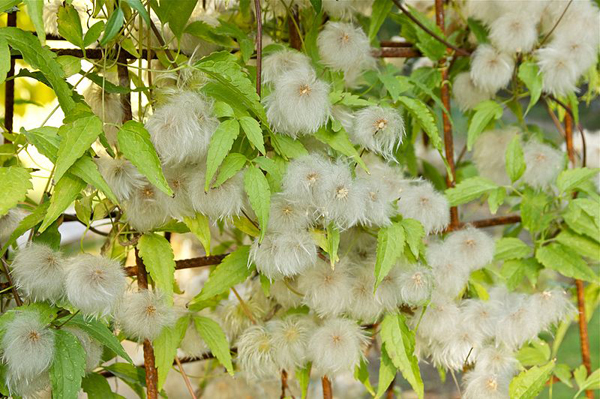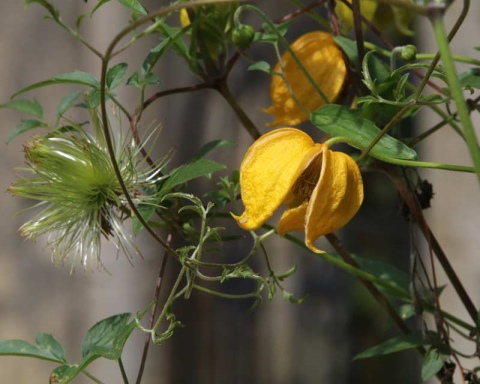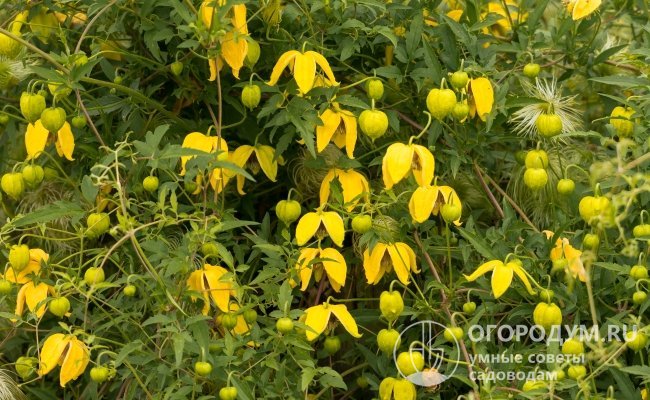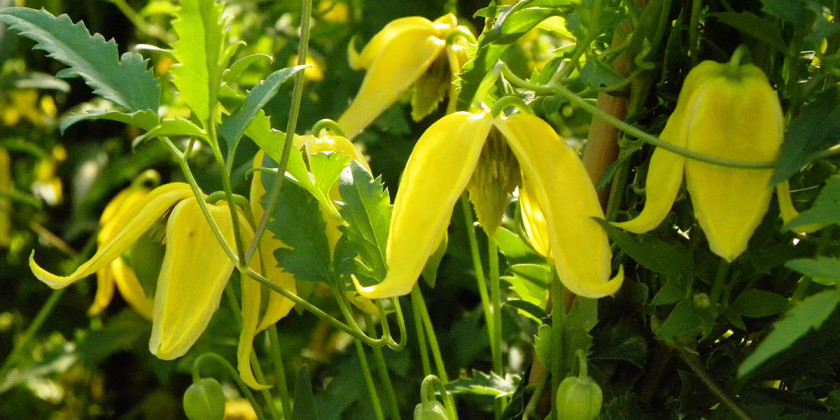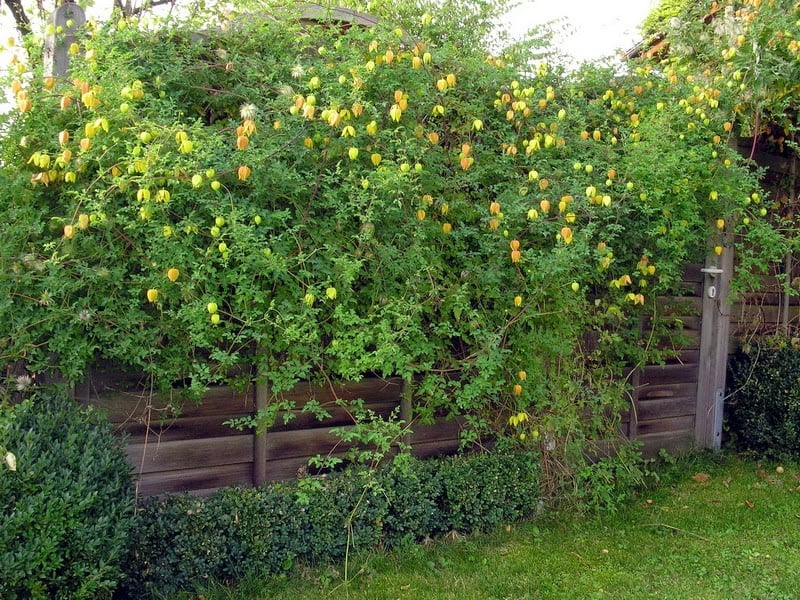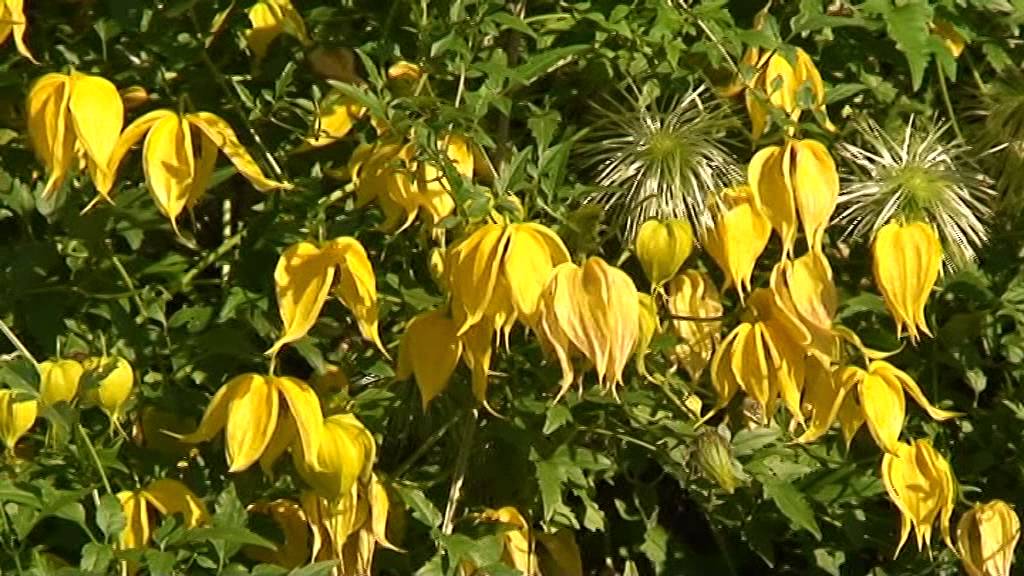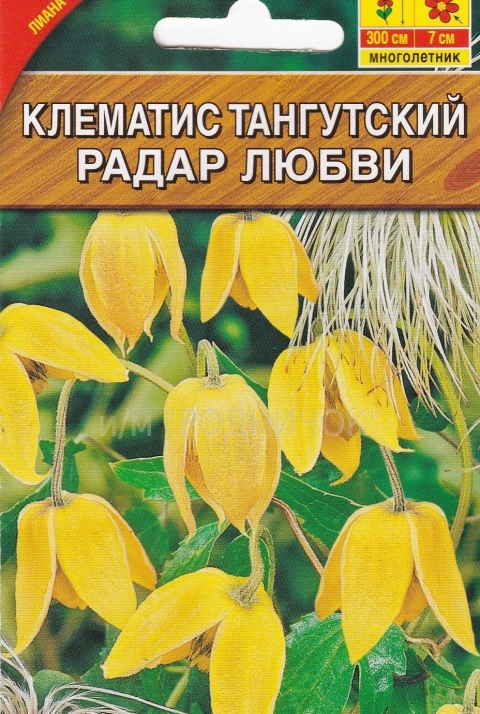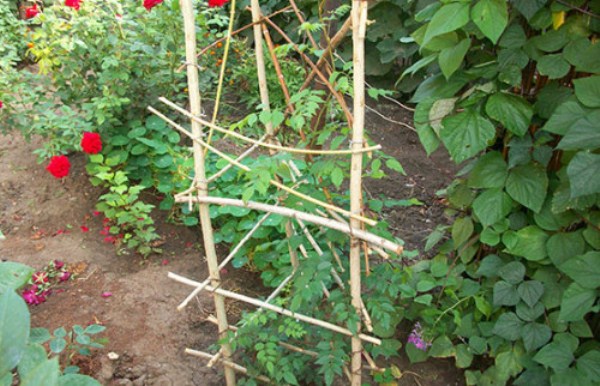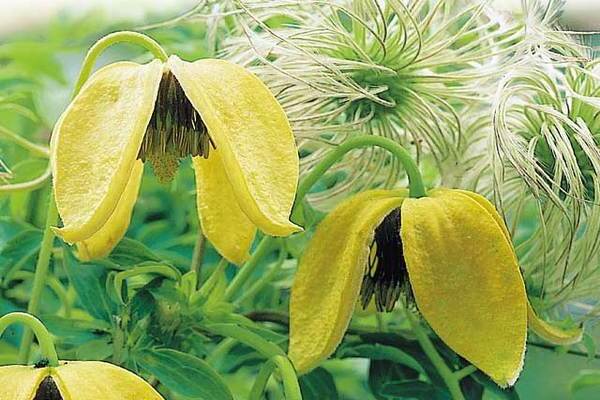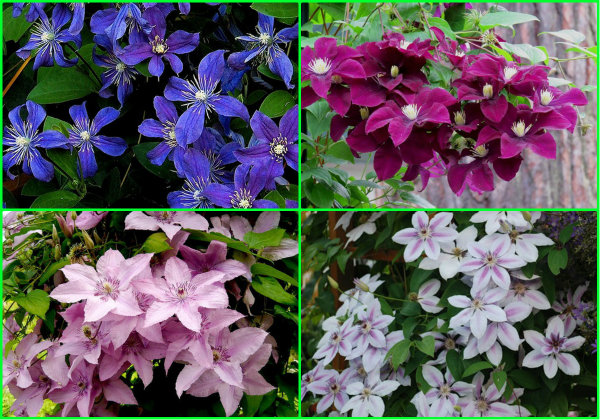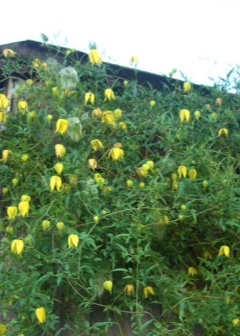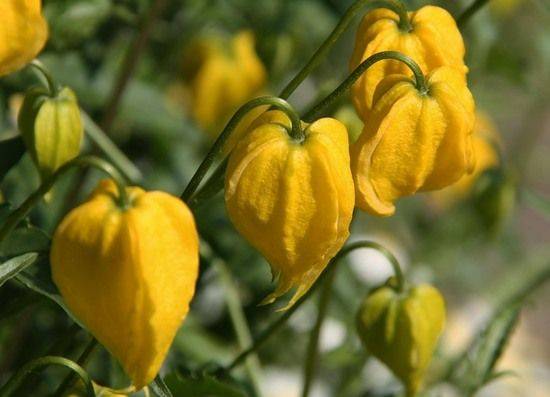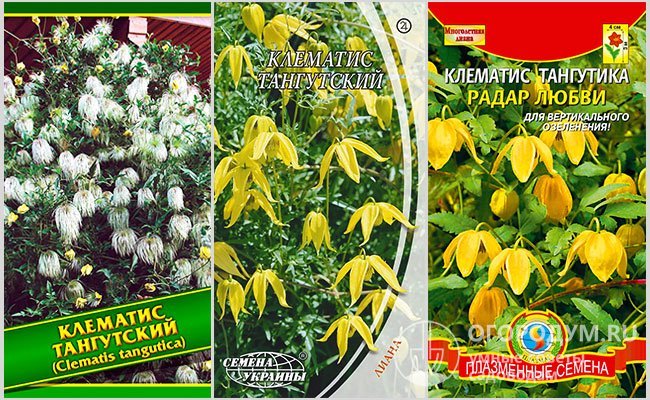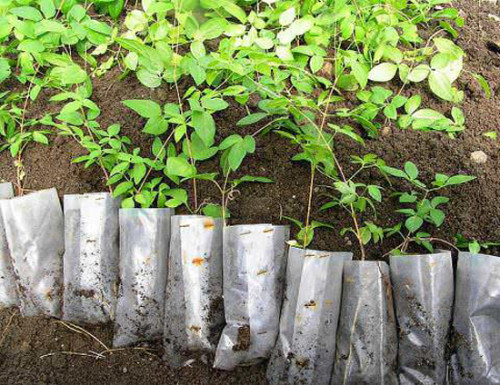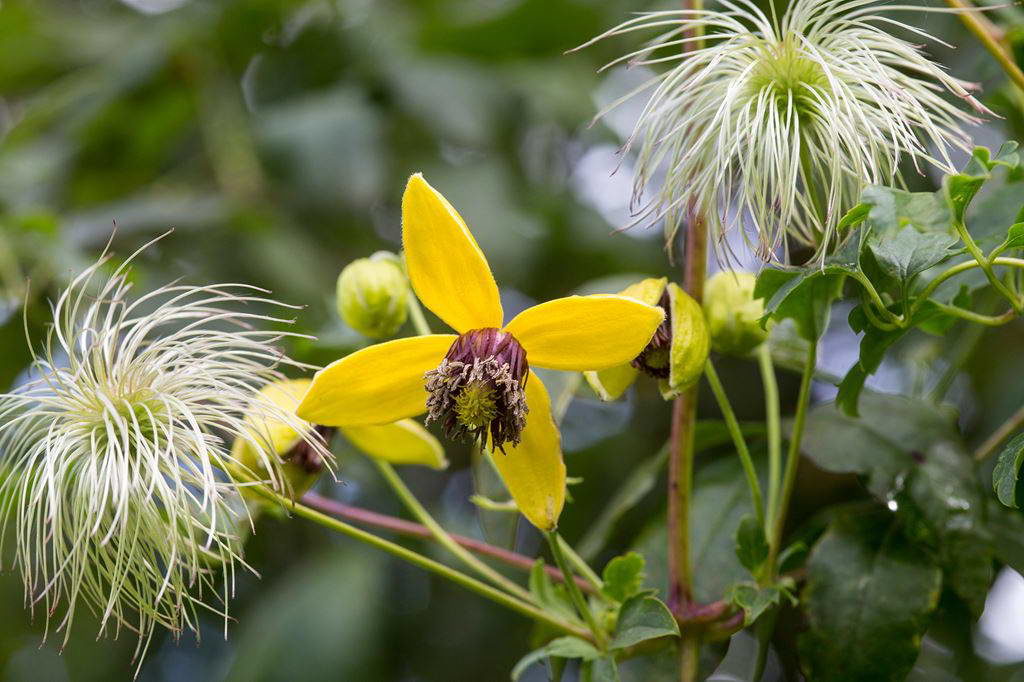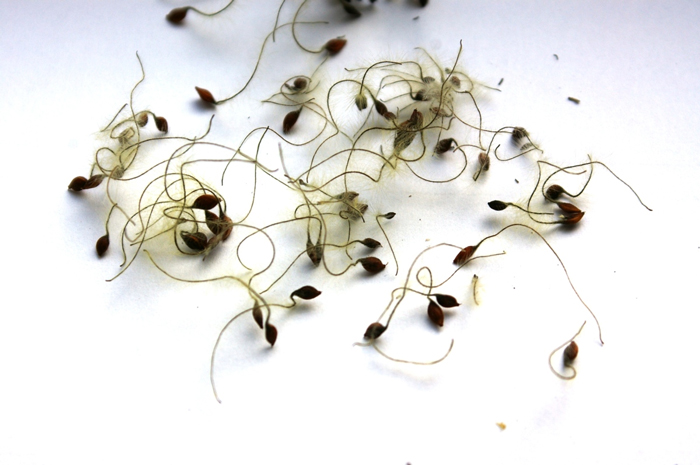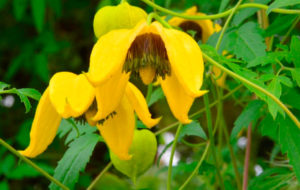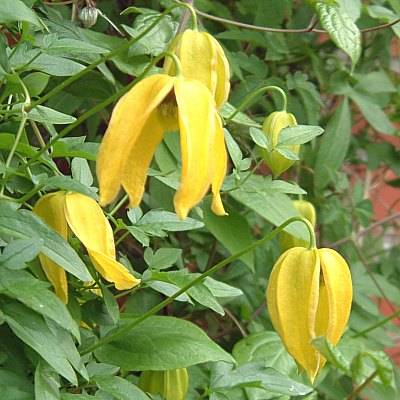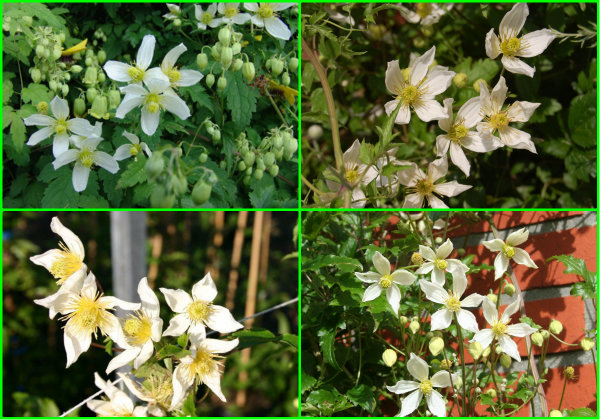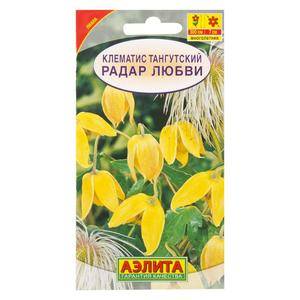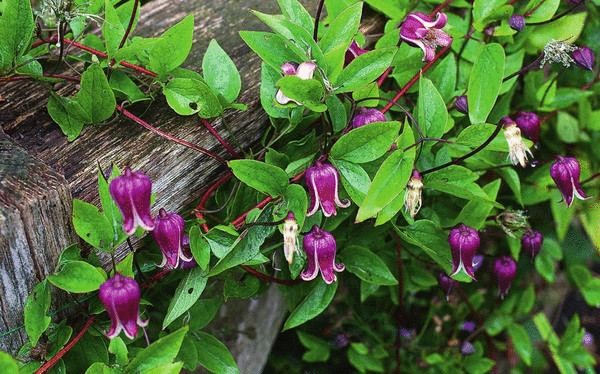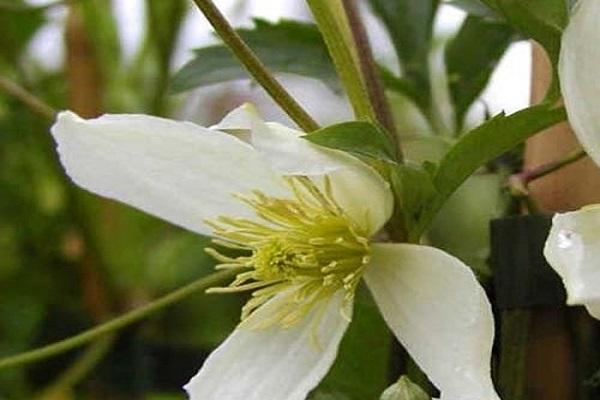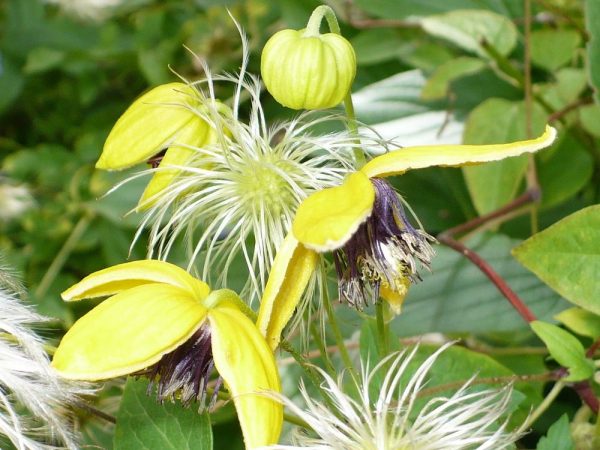Growing
Perennial clematis is grown in accordance with the basic requirements. An important condition is timely pruning according to the scheme of the third group. For abundant flowering of clematis, additional supports and the right choice of place when planting are important.
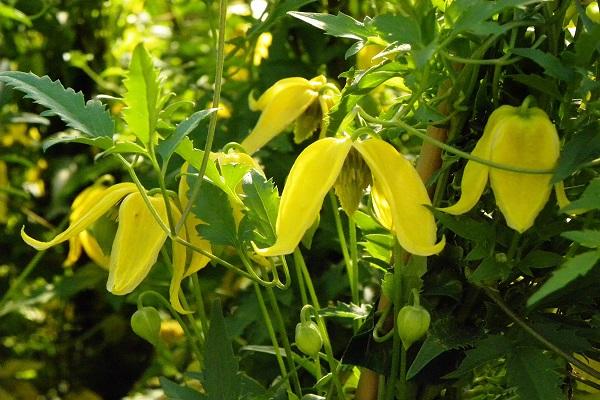
Timing
For growing crops, the seedling method is used. Seeds are sown so that the seedlings reach 45 to 60 days before planting on open ground. Usually seedlings are sown in mid-March. They are planted in a permanent place when the soil warms up to +15 degrees, the exact dates depend on the climatic conditions of the region.
Selection and preparation of planting material
For planting, use self-collected seeds or materials purchased in the store. For clematis, planting material is prepared in an unusual way. The seeds are spread over the surface of the peat, sprinkled with the top layer and removed to the bottom shelf of the refrigerator for 3 months.
By the beginning of March, the seeds are taken out and they begin to prepare for planting. They are soaked, disinfected and sown. Seedlings are planted when the soil warms up and the roots reach a length of at least 10 centimeters.
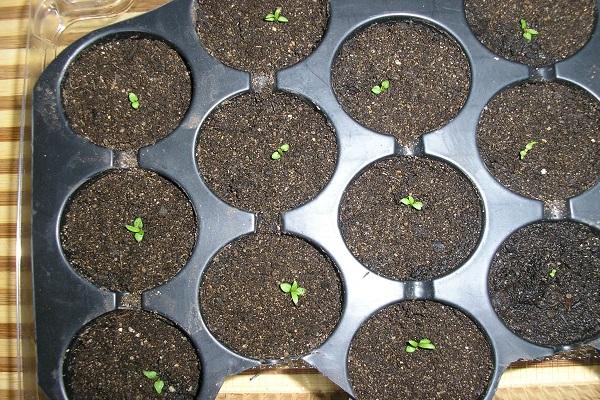
Site requirements
The further development of the perennial depends on the choice of location. It must meet several requirements:
- open, lighted areas with access to sunlight;
- lowlands with high groundwater flow are excluded;
- lack of through winds;
- can be placed near or around thick-stemmed trees.
It is important for clematis to get 6 hours of sunlight every day. In shaded areas, flowers can react by shrinking buds
Soil selection and preparation
Clematis grows in fertile soil saturated with air. Before planting, the soil is dug up, adding organic complexes. In addition, a dense drainage layer is needed for the roots of the lianus shrub. Expanded clay, vermiculite are suitable for this.
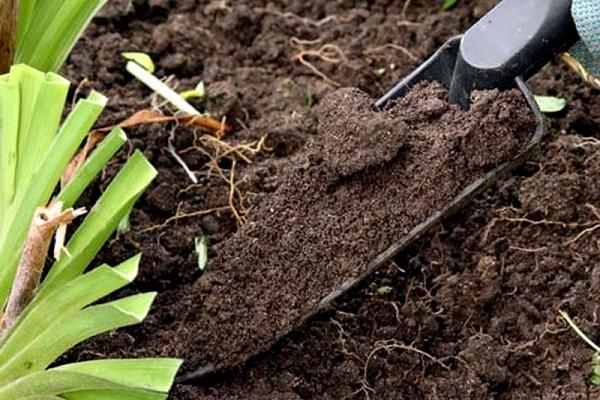
Landing scheme
Clematis are usually planted along hedges or to decorate gazebos. Then a distance of about 1.2-1.5 meters is left between the bushes, for the growth of vines.
Basic rules of care and cultivation
The desire to grow clematis and achieve gorgeous flowering, forced the florists to study the plant in more detail.
In order for the result to please, the following algorithm of actions should be performed:
In April - May, the plant is planted with open roots. If the roots are closed, planting is done at any time.
A hole is dug for planting standard sizes 60x60x60
It is important to pour drainage at the bottom, after which a mixture of sand and humus is introduced. After filling the hole to the center, place the seedling rhizome and cover the remaining space with soil.
A distance of 1 meter is maintained between the seedlings.
After planting, the plant is well watered and the soil is fluffed.
Young seedlings should not be deepened more than 10 cm
Clematis of more than 2 years of age is immersed in the soil by 20 cm.
The bush is predominantly thermophilic and does not like gusts of wind, as otherwise the open sun is also not to its taste. The best place for clematis is a draft-free area with light shading.
The soil structure should be loamy or sandy.
Every month the plant needs feeding with chicken droppings, lime milk.
Irrigation of the bush is carried out in the evening with a urea solution.
Pruning rules
To trim clematis correctly, you need to practice making an oblique cut. To ensure lush flowering, this manipulation is indispensable. Before making a cut of the vine, it is necessary to step back 7 mm from the buds.
There are three types of pruning, which differ depending on the type of clematis:
- Grape-leaved - before preparing for winter, they trim the ends, maintaining a height of one and a half meter. In summer, pruning is done to give a beautiful shape to the bush ("Macropetal", "Patens").
- After the first year of flowering, the plant is cut to a 30 cm level. Further, the branches are trimmed after each flowering to a meter size. Once every five years, clematis is cut significantly before winter ("Barbarajackman", "Miss Bateman", "Saw", "BizJubili", "Multi Blue", "Florida").
- Vines are pruned once a year, in the fall. At the same time, only a couple of buds are left and the height of the bush is 30 cm ("RougeCardinal", "GipsyQuinn", "Nikolay Rubtsov", "Ville de Lyon").
How to cover clematis for the winter?
To ensure a comfortable wintering for clematis, 2 buckets of humus are poured under each bush
During thaws, it is important to avoid excessive water flooding.
Shoots are placed on an elevation made of boards or branches and wrapped in a covering material. For reliability, the vine can be covered with leaves and covered with slate on top.
The use of pankration in room culture
In home culture, floriculture enthusiasts usually grow Illyrian pankration, marine pankration, and beautiful pankration.
Pankratsii Illyrian and Pankratsii splendid are placed in warm sunny rooms (apartments, offices, greenhouses, conservatories) in large containers or pots. In the open field, they are grown as single annuals, the bulbs of which are placed in pots for the winter and taken indoors. Different species bloom at different times, 1-2 times a year.
Pancratium Illyrian (lat.Pancratium illyricum). Steve law
Pancratius Illyrian
Pankratius Illyrian translated from Italian means lily-star. Most common on the islands of Malta, Sardinia, Corsica. Large plant, up to 50-60 cm high. Bulb 4-8 cm in diameter, covered with several layers of light brown integumentary scales. The neck of the bulb is strongly drawn. Leaves are medium-belt-shaped, intense green with a bluish bloom. A 40-60 cm flower stalk bears 6-12 flowers in an umbellate inflorescence.
Differs in the characteristic structure of flowers that bloom in May – June. The lower part of the filaments grows in a petal shape. They grow together to form a delicate calyx, which adheres to the perianth with its lower part. The upper free part of the stamens protrudes beyond the fused calyx, giving the flower a graceful appearance. The flower exudes a pleasant vanilla scent. The fruit is a polyspermous capsule. Reproduction by seeds and vegetative by onion babies. A very unpretentious look that does not require special individual care.
Pankratius the beautiful, or Hymenokallis the beautiful. (Latin Hymenocallis speciosa, syn. Pancratium speciosum). Daniel J. Layton
Pankratius the beautiful
Pankratius is beautiful, its origin is from the Antilles. The base of the plant is formed by a large beige-brown bulb with a long neck. Belt-shaped leaves with short petioles, soft, rich green. The flower is white, large, lily-like, differs from the Illyrian pancracy in narrow, prominent corolla petals.
In the middle of the flower there is a crown, which is formed from accreted expanded petal-shaped bases of filaments. On the peduncle there are 7-16 flowers that enter the flowering period in late autumn and early winter.
Pancracy sea
Seaside or marine pankration is known among flower growers as "sea daffodil", sand lily, Lily of Sharon. On the coastal slopes and empty beach areas of the Black Sea coast of the Caucasus and the Mediterranean east coast, you can find micro-meadows from several plants of the pankration of the sea. The species blooms in August-September, which is the peak of the dry season. The appearance of vegetative organs is similar to other species. The same large bulb, belt-like leaves, high peduncle.
The flower differs from other species in its special exquisite beauty of long tubular flowers bordered by narrow long petals. A tube up to 7 cm long, ending in 12 teeth, is formed by accrete filaments. Since most of the plants grow on the coast, the spray of the sea waves hits the flower. To protect it from salt water, it is covered with a thin layer of waxy substance.
The amazing flower pancracy of the sea is revealed in all its graceful beauty for just one night. Tourists from all over the world come to see the flowering of Sharon's lily (mentioned in the Bible). This period is called "wedding night" in Hebrew, and the sandy star Lily of Sharon is a symbol of the Jewish people.
Seeds of pankration of the sea are very interesting. They look like pieces of coal covered with a thin layer of cork on top, which prevents them from drowning in sea water, where they are carried away by the coastal wind and steep waves. They can stay in salt water for more than a month without losing germination. Once on the coastal sand, they give rise to new plants.
How to plant?
In order for the planting of Tangut clematis not to become a serious problem, it is worthwhile to carefully study all the features of the process in advance. An adult plant, rather than young seedlings, tolerates movement more easily. But this does not mean that the seedling will root well in any part of the summer cottage or local area. It is worth purchasing a plant in proven nurseries, otherwise there is a great risk of encountering diseases or pests that can quickly spread throughout the garden.
Only clematis with a developed root system are suitable for planting - it has at least two root processes and a length of 10-15 cm. The surface of the bark must be clean, without cracks and neoplasms. Seedlings in containers or bags are ready for planting throughout the year. Tangutika with open roots should be planted in the spring, and it should not be kept outdoors for a long time due to the risk of drying out and death of the plant.
For planting creepers, a well-lit area is selected, but with partial shade, which allows to protect the plant from the scorching sun in the hottest hours. You should not choose places where the wind moves openly, as well as lowlands with a close location of groundwater.
Preparation for planting takes place in a specific order.
- Creation of a landing pit. It should be from 60 cm wide and have the same depth. In an adult plant, the root system grows strongly. It is better to retreat from neighboring plantings by at least 1.5 m. Drainage is laid in the pit, and on top is a mixture of two parts of compost, one each of sand, earth and peat, you can add lime and ash.
- Support installation. If it is just a vertically positioned pole or frame structure, they are placed in the pit. And also the lattice or the side of the gazebo, the structure of the porch or pergola can act as a support.
- Having formed a small hill from the prepared soil mixture in the planting hole, it is necessary to place a seedling on it, spread the roots of the plant. The root collar should be under the upper edge of the pit, 5-10 cm lower. Further, the depression is covered with earth to the beginning of the stem, while the level around the trunk will be below the main soil layer.
- Abundant watering of the seedling is carried out. Fertilizers can be dissolved in water.
- The formed trunk circle is mulched. Peat or coniferous sawdust will do. They fill the surface with a layer of 4-5 cm.
landing
Lush bloom of a real aristocrat Levisia
A unique perennial with luxurious flowering - endemic to North America. At the same time, Levisia cannot be found in nature on any continent. All levisia develop quite specifically, the plants depend on humidity in the summer and can completely disappear and then reappear imperceptibly.
Most levisiae actively develop from spring to flowering, which begins in May-June and lasts until July-August, after which the foliage dies off.But there are also species in which foliage develops in autumn, and flowering occurs in early spring, and crops that keep leaves with comfortable humidity.
In height, Levisia will not exceed 30 cm and in most cases is inferior in size even to low-growing azaleas. The plant develops in the form of a rosette of elongated leaves and with a beautiful bluish edge, which can be whole lingual, and lanceolate, and beautiful toothed. Thick and leathery, they blend beautifully with stone chips and the texture of large boulders.
The main feature of Levisia, which turns the plant into a truly unique garden species, is a luxurious flowering. It is not just decorative, but incomparable in its aesthetic characteristics. Complex inflorescences with a bright yellow center and rounded or elongated "petals" are more reminiscent of chamomile, then luxurious lilies or magnolias.
Levisia flowers reach 5 cm in diameter, which, given only 5-6 times the size of the bush, makes them seem even more huge. Of course, there are also Levisia flowers that are much more modest in size, but even centimeter-sized flowers of tiny species against the background of bushes seem large and shining.
The beauty of the bloom seems to be even greater due to the duration. After all, Levisia blooms tirelessly throughout literally the entire summer. How such a crumb can bloom tirelessly remains a mystery. True, the answer to it is very simple: Levisia will arrange a three-month show only with proper care, which should provide the plant with the necessary nutrients in large quantities.
The Levisia color scheme includes various variations of bright shades of pink and orange, as well as rich tones of the white and yellow spectrum. At the same time, color variations can not be called anything other than watercolor: sometimes bright and daring, then gentle and pastel, salmon, fuchsia, apricot and other tones that always look advantageous conquer with freshness and purity.
Most Levisias have complex colors, with darker spots and veins. And the difference in color saturation between the buds that have just blossomed and already mature flowers makes the colorful decoration even more elegant.
 Lewisia congdonii
Lewisia congdonii
Planting and leaving
The very first step before planting a young seedling in open ground is choosing a place. This will determine how the plant is accepted and whether this area will be comfortable for active growth and flowering. Clematis is afraid of drafts and high groundwater, since often its root system can reach a length of 1 m or more. It is acceptable to plant the crop next to other shrubs that will create partial shade and protect it from direct sunlight.
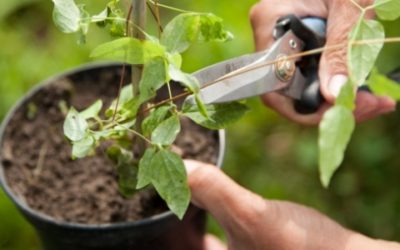
The soil for the optimal existence of this variety must be well-drained and fertile. Many specialists prepare the soil on their own, digging it up and laying a layer of crushed brick or small stone. Before planting, the land must be well enriched; for this, you can purchase special mineral preparations or use organic fertilizers.
An adult and strong seedling, which is already planted in a permanent place of growth, is placed in a hole about 50 cm wide and deep.If the soil has not been prepared in advance, then you can mix the earth extracted from the hole with sand and peat, add superphosphate, ash and lime.
Initially, it is better to worry about support for a young and rapidly growing flower. The seedling is deepened together with the root collar, by about 5-7 cm, sprinkled on top with a small layer of soil and slightly compacted. After planting, the holes are watered abundantly with water, then mulched. Sawdust and peat are well suited for this.
It is necessary to water the bushes regularly, the water should be settled. Water it 1-2 times a week. But in dry weather, the frequency of humidification can be increased.
Top dressing is carried out in 3 stages.Initially - during the period of active growth, then - when buds appear and after flowering. You should not feed the shrubs during the budding period, as fertilizers can cause active growth of the stems and stop flowering.
It is a pleasure to take care of Tangut clematis, as it is unpretentious and not very demanding in care. A shrub, with the right choice of place and soil preparation, is able to settle in the garden for many years and delight with its appearance.


